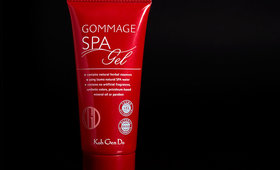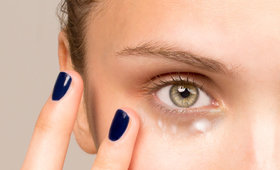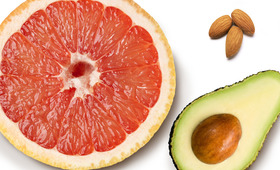
When it comes to skincare, I can be a bit of a know-it-all. I geek out over buzzy new ingredients and pride myself in being able to decipher labels full of scientific-sounding words. This pastime makes me about as good at dinner party small talk as you’d expect—which is to say, not very good at all.
The one ingredient that I’ve noticed popping up everywhere lately? Polyhydroxy acids, or PHAs if you want to sound cool. Beauty editors everywhere are touting PHAs as “the next generation of chemical exfoliants” and “the new super acids.” But why, you ask? Here’s a primer on PHAs and why they may just change your exfoliation game.
What are PHAs?
PHAs are a family of exfoliating acids. They work a lot like other chemical exfoliants by loosening dead skin cells, but they’re far less likely to cause irritation and dryness. On a molecular level, they’re similar to alpha hydroxy acids—in fact, the only difference between the two is an extra cluster of hydrogen atoms. Examples of PHAs include gluconolactone, galactose, and lactobionic acid.
What are the benefits of PHAs?
Much like AHAs, PHAs exfoliate the surface of the skin to reduce dullness rough texture, fine lines and discoloration from acne and sun damage. But unlike AHAs, which can cause redness, irritation, and stinging in sensitive skin, PHAs are gentle. Their large molecular size makes them unable to penetrate too deeply, which is good news for sensitive skin! Even better, PHAs also moisturize the skin, protect from free radical damage, and support healthy barrier function—all super-important for overall skin health.
Who should use PHAs?
Anyone can benefit from the gentle exfoliating power of PHAs, but they’re especially beneficial for folks with sensitive skin or conditions like eczema or rosacea who can’t tolerate harsher chemical exfoliants. If you have acne-prone or oily skin, you may benefit more from a beta hydroxy acid like salicylic acid, which can penetrate into pores to unclog blockages and reduce sebum.
How do I add PHAs into my routine?
The best way to add PHAs into your skincare routine is with a water-based toner or serum, like Lixirskin Night Switch PHA/AHA 10%. Unlike AHAs, they don’t make your skin more photosensitive or susceptible to UV damage, so you can use PHA-laced products in the morning and at night. The most common PHAs are gluconolactone, galactose, and lactobionic acid, so keep an eye out when you’re scanning labels.
Are PHAs the exfoliating ingredient your skin has been missing? Before you go all the way, remember to patch-test on a small area of skin. If your skin is sensitive, it’s best to give it time to acclimate when using chemical exfoliants. Start with once per week and slowly work your way up to avoid damage.
Featured Products
You Might Also Like
-

Product Spotlight
The Face Exfoliator That Really, Really Works
- 1104
-

Skincare
What's Your Skin Doing While You Sleep?
- 282
-

Skincare
Top 5 Beauty Editor-Approved Eye Treatments
- 574
-

Skincare
Grapefruit, Almond … Jojoba? Ten Popular Natural Oils Demystified
- 1382
-

Face Skincare
The Benefits of Pumpkin in Skin and Hair Care
- 28
-

DIY Skin Care
How to Deal With Face Redness
- 2134








